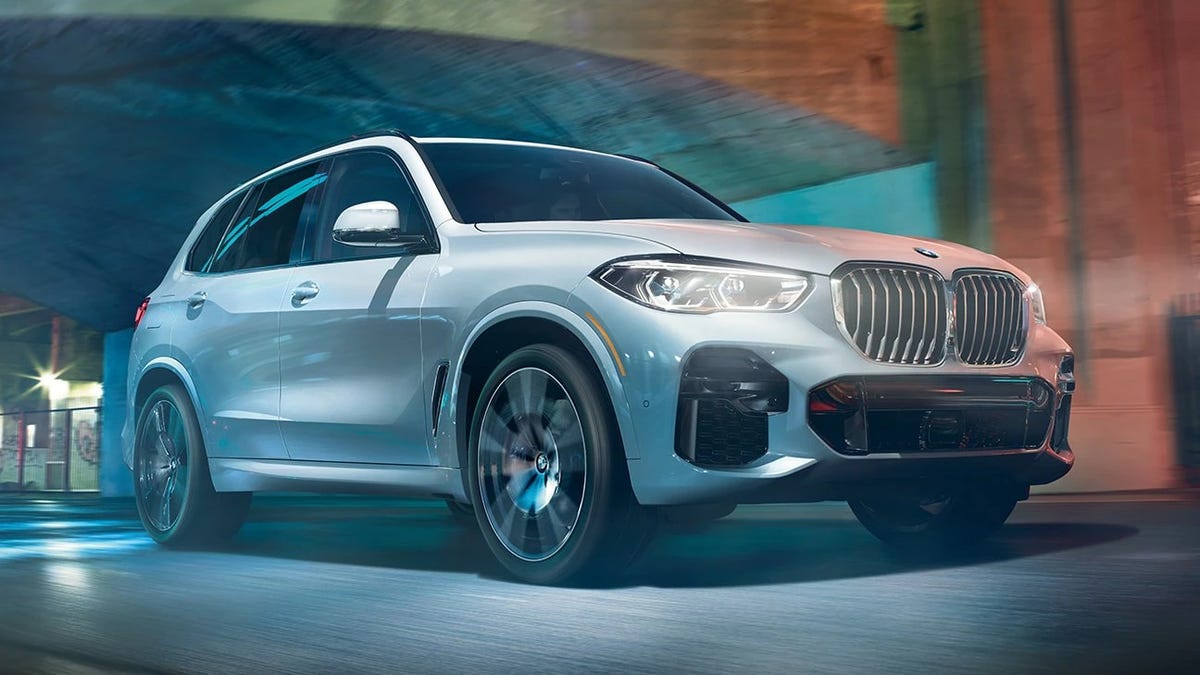As a hybrid car owner, you’re doing more than saving money on gas and reducing your environmental footprint: You’re also benefitting from a better-performing car.
Hybrid cars draw from both gas and electric sources of power, resulting in a more efficient ride. They can alternate the engines that they use or use both at the same time for extra power.
Also: The best electric cars
Here’s a quick breakdown of the three engine combinations that can go into a hybrid vehicle:
Plug-in hybrid cars can receive a federal income tax credit of up to $7,500 if the car is on this list. PHEVs have a larger electric battery with more capacity that you can recharge with an external power source.
In a series hybrid system, like the one used by the BMW i3, the internal combustion engine recharges the battery while the electric side of things powers the wheels.
In the parallel hybrid system, like the one used by the Toyota Prius, both the electric motor and the internal combustion engine power the car’s movements.
Also: The best affordable EVs
ZDNET experts looked at the best hybrid cars on the market going into the new year and selected affordable yet quality options.
- Climate control system with pollen filtration
- Toyota Safety Sense
- High MPG
- Doesn’t have a blind spot monitor or intelligent parking assist like the LE and LE AWD-e models
Features or tech specs
- MPG (city/highway/combined): 58/53/56
- Power: 121 hp
- Acceleration: 0-60 mph in 7.2 seconds for the newest model
- Price: $25,075
The Prius is a classic hybrid car that keeps getting better. It ranks well in affordability, with a starting price of $25,075, and it also has great gas mileage at 56 mpg. On a ranking of the hybrid cars with the best gas mileage, it was topped only by the Hyundai Ioniq Blue, which has 59 mpg. The 2023 Prius will be the first Toyota vehicle to go “Beyond Zero” emissions as Toyota aims to maximize efficiency with as low emissions as possible. In the Prius L Eco, you have impressive safety features, like the pre-collision system with pedestrian detection and full-speed range dynamic radar cruise control that you can use on the highway to drive at a preset speed while maintaining a preset distance from the driver in front of you.
- Eligible for a federal tax credit of up to $7,500
- Hyundai digital key
- Regenerative braking recharges battery
- Heated front seats
- All wheel drive
- Hands-free smart liftgate
- May not be a good option for families with more than 5 people
Features or tech specs
The Hyundai Santa Fe plug-in hybrid (PHEV) is perfect for families with its large cargo volume and safety features. It has collision-avoidance assist features, lane-keeping assist, smart cruise control, and more. The Hyundai digital key allows you to lock the doors of your vehicle from the app, and it even remembers your seat, mirror, and navigation settings. You also get heated front seats and an all-wheel drive for extra stability in all road conditions. This is a plug-in hybrid, so it has a higher-capacity electric battery when compared to a series or parallel hybrid system. You can recharge the car with an external power source. The PHEV status of this car qualifies it for a federal tax credit of up to $7,500.
Also: The new EV tax credit is complicated. Here’s who qualifies
- Eligible for a federal tax credit of up to $7,500
- 30 miles of all-electric range
- All-wheel system automatically balances power for safer driving
- Check on the car with the My BMW app
- Can be too expensive for some, even with the tax credit
Features or tech specs
- MPG: 50 (on electric), 20 (gas only)
- Acceleration 0-60 mph in 5.3 seconds
- Electrical total range: 31 miles
- Total range: 400 miles
- Power: 389 hp
- Price: $65,700 (before a $7,500 federal tax credit)
This luxury, sports activity PHEV is eligible for a federal tax credit of up to $7,500 and additional state incentives. The BMW xDrive system is the foundation of this car, taking you through any terrain with ease. The intelligent, all-wheel system collects and uses your driving data to transfer power to each wheel for the best control of your car in every season. If you lose traction on a slick or snow-filled road, the xDrive Dynamic Stability Control feature helps minimize the loss of traction so that you can power out of snow and drive safely. You can charge this car’s electric battery easily with a BMW Wallbox or any power outlet, and you can check your charging status, range, and more from the My BMW app.
- High projected driving range
- Sound-absorbing windshield glass
- Kia Drive Wise driver assist
- Touchscreen entertainment
Features or tech specs
- MPG: 53
- Acceleration (0-60): 9.1 seconds
- Projected driving range: 479-588 miles
- Price: $26,490
The Kia Niro hybrid boasts an impressive driving range of up to 588 miles — meaning less time at gas stations or charging stations for your car. Kia uses a parallel hybrid system for this car, and regenerative braking too. You get a touchscreen display that shows you navigation and diagnostic information about your vehicle, and you get standard safety features too, like collision avoidance assist, lane following assist to keep you at the center of your lane, and highway driving assist that helps you match posted speed limits.
There are also plug-in hybrid and EV options for the Kia Niro, but neither option qualifies for the federal tax credit.
- Great fuel economy
- Standard safety features
- Good steering precision
- Entertainment system with touchscreen display
- 15 cubic feet of cargo storage is less than competitors like the Prius
Features or tech specs
- MPG: 52
- Power: 107 hp
- Acceleration: 0-60 mph in 7.7 seconds
- Price: $26,855
The Honda Insight is a quietly powerful hybrid that packs in 52 mpg and accelerates well. It’s a functional car that prioritizes the user, with precision steering, a responsive touchscreen entertainment system that syncs up with Apple CarPlay or Android Auto, and plenty of cargo storage space. You can get more storage with the Toyota Prius, but the 15 cubic feet of storage with the Insight could be more than enough for your needs. The safety features included with the Insight are essential, like a rearview camera, stop sign recognition, blind spot monitoring, and more. Honda discontinued the Insight in June, but you can still purchase a used model.
The Toyota Prius L Eco stood out among the other options for its affordability and high fuel economy. For the price, you’re getting a dependable hybrid with a long history. Toyota’s climate-neutral commitments are also a standout. The other vehicles on this list offer their own benefits, depending on what you prioritize.
|
Product |
Price (before any eligible tax credits) |
MPG |
Acceleration (0-60) |
|
Toyota Prius L Eco |
$25,075 |
56 |
7.2 seconds |
|
Hyundai Santa Fe Plug-in Hybrid |
$40,000 |
76 |
7 seconds |
|
BMW X5 xDrive45e |
$65,700 |
50 (only electric), 20 (gas only) |
5.3 seconds |
|
Kia Niro Hybrid |
$26,490 |
53 |
9.1 seconds |
|
Honda Insight |
$26,855 |
52 |
7.7 seconds |
Each option below is uniquely suited to different lifestyles. If you know you’re interested in a car that qualifies for the federal tax credit, the Hyundai Santa Fe PHEV and the BMW X5 xDrive45e PHEV are your best options. The Toyota Prius, Kia Niro, and Honda Insight will appeal to a variety of other buyers looking for a different type of hybrid. If you’re set on a used vehicle, consider the Honda Insight.
|
Choose this… |
If you want… |
|
Toyota Prius L Eco |
An affordable, fuel-efficient hybrid |
|
Hyundai Santa Fe PHEV |
An affordable, family-friendly SUV |
|
BMW X5 xDrive45e PHEV |
Luxury, powerful sports activity vehicle |
|
Kia Niro Hybrid |
An impressive driving range and user-focused details |
|
Honda Insight |
A high fuel economy hybrid |
We wanted this list to be different and highlight use cases, not just technical specifications. A hybrid car that might have great features might not have made it on this list because another vehicle outshone it for usability. I wanted to make sure that I could make a case for each of the cars highlighted here in terms of how the vehicle connects to your life, and how it might improve your life. Performance mattered, as well as comfort and the tech the car used.
You save money on gas, over $3,000 every year on average, and benefit from a more environmentally-friendly vehicle. Hybrid cars can also have better performance than their gas-powered counterparts because they have both gas and electric sources of power to draw from. Hybrid engines can alternate the engines that they use or use both.
Hybrid cars take in more fuel than they usually do at colder temperatures because hybrid batteries need more time to warm up during those months.
Hybrid cars feature complex technology, like an electric motor, specific gears, etc, that leads to higher initial costs and maintenance costs. If you buy a new hybrid, you’ll probably get a warranty with it, but if you’re buying used, you’re taking more of a risk.
Plug-in hybrid cars are eligible for a federal income tax credit of up to $7,500 if the car is on this list. A plug-in hybrid is different from a series or parallel hybrid system because it has a higher-capacity battery. You can recharge the car with an external power source. In a series hybrid system, like the BMW i3, the internal combustion engine recharges the battery while the electric side of things powers the wheels. In the parallel hybrid system, found in the Toyota Prius, both the electric motor and the internal combustion engine power the car’s movements.
Of course. There are plenty of options out there to suit any budget or need. Here are some additional options to consider.


